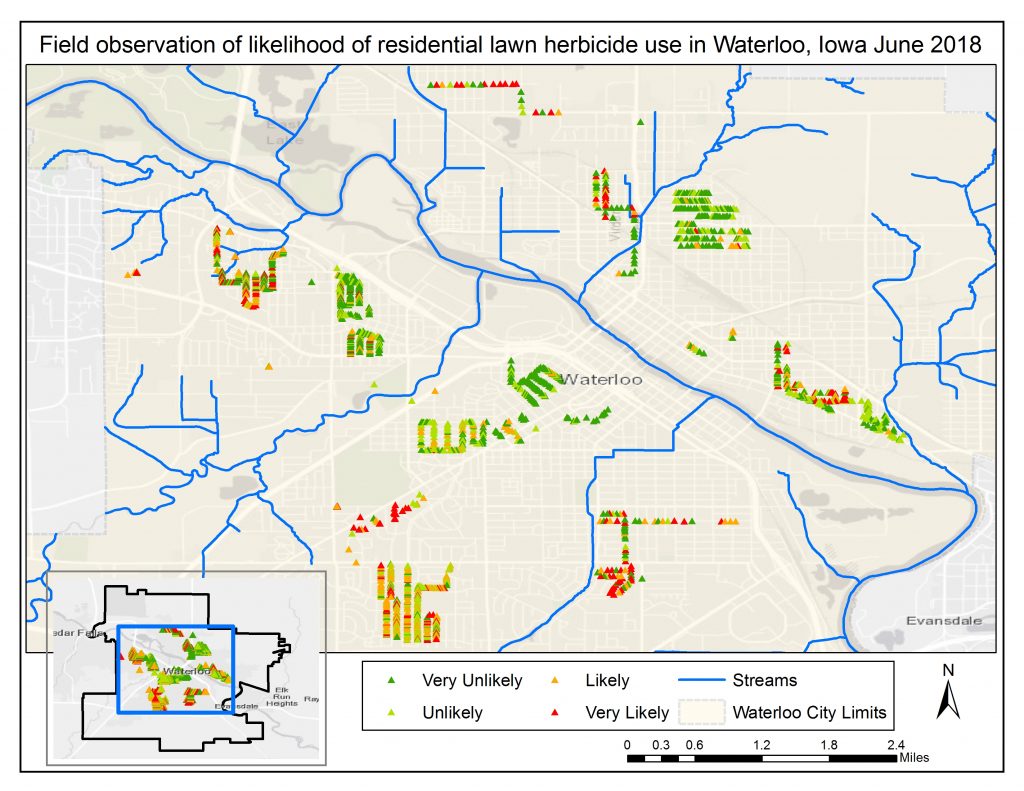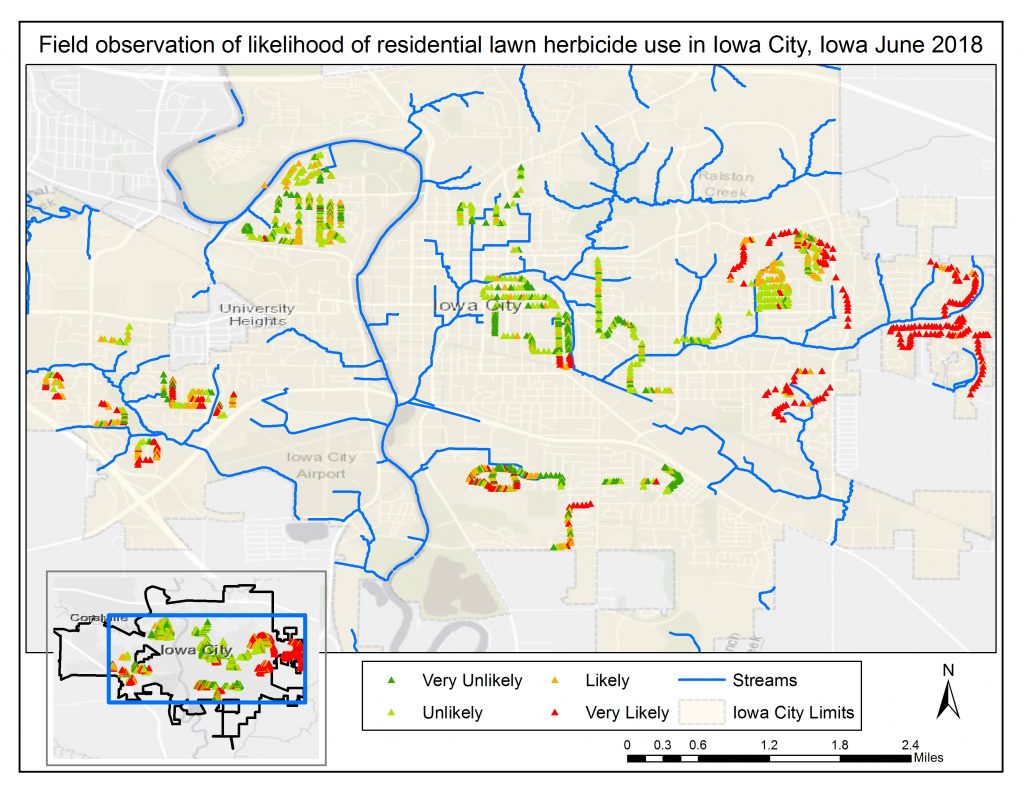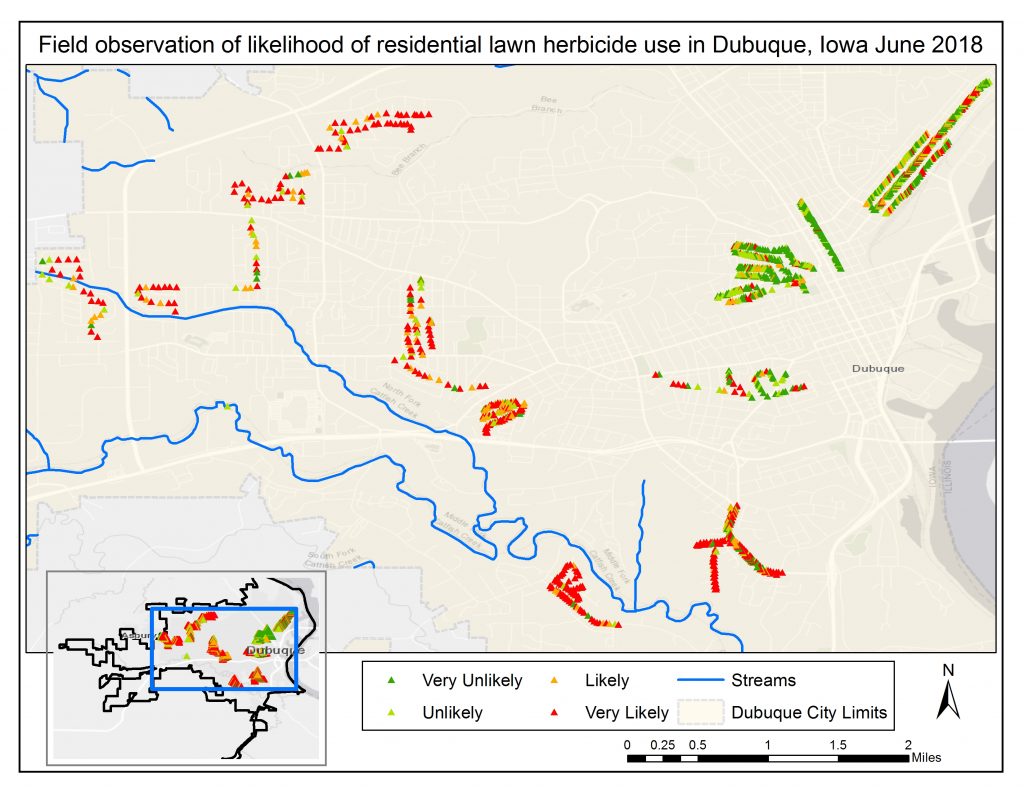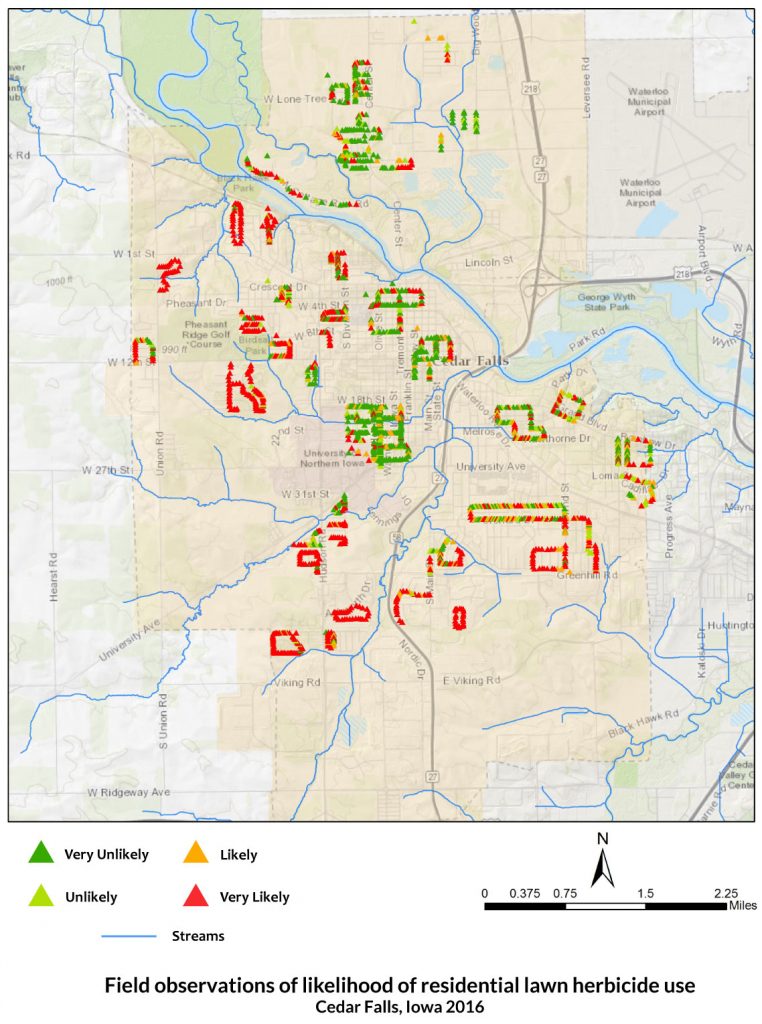The maps below show likelihood of residential pesticide use in certain neighborhoods in Waterloo, Cedar Falls, Iowa City and Dubuque. The study was based field observations conducted by Good Neighbor Iowa and concluded in 2018.
Please use the tabs below to navigate and scroll down to see the estimated use in the 4 communities listed below and our interpretation of the data.




We set out to estimate the pounds of lawn weed killers applied to residential parts of 4 Iowa communities. We first created the maps through actually visiting each property in randomly selected neighborhoods, and determining whether they applied weed killers or not. We assumed that “Very Likely” lawns were treated twice, “Likely” lawns received one application, and the others we assumed did not apply any.
In collaboration with our colleagues at the UNI Geography Department, we then estimated, based on typical neighborhood lot size, the acres of lawns that were treated once and the acres that were treated twice. We then assumed a commonly used weed killers (containing a mix of three weed killers and “other” ingredients, which are often highly toxic as well), and assumed that everyone followed the label and applied them accordingly to those acres.
The table below is a conservative estimate of pounds of weed killers applied in the residential areas of 4 Iowa communities based on our observation. Note: These are merely an estimate. These do not include golf courses, parks, schools, businesses and industrial parks.
| City | Total lbs of 2,4-D applied | Total lbs of MCPP applied | Total lbs of Dicamba applied | Total lbs of “other” ingredients applied | Total pounds of weed-killers applied |
|---|---|---|---|---|---|
| Cedar Falls | 838.3 | 205.5 | 43.3 | 10,578.30 | 11,665 |
| Dubuque | 1330 | 326 | 68.6 | 16,783.50 | 18,508.00 |
| Iowa City | 1,616.30 | 396.2 | 83.4 | 20,394.80 | 22,490 |
| Waterloo | 1,840.30 | 451.1 | 94.8 | 23,221 | 25,607 |
Our advice: Be a Good Neighbor and commit to manage your residential lawn without weed killers to protect child health, water quality, and pollinators.
Large volume of highly hazardous weed killers are used around children and families in residential neighborhoods, entirely for cosmetic reasons. Clearly some neighborhoods use a lot more than others.
Pesticide labels specifically state that weed killer are highly toxic to aquatic organisms, and that they should not applied near water. As you can see from the map, local rivers and streams are always nearby. We already know that weed killers applied to urban lawns do run off and pollute local streams.
All of this is unnecessary and and preventable. In this website you can see many examples of communities who have committed to manage their parks, schools, and child care centers without weed killers.